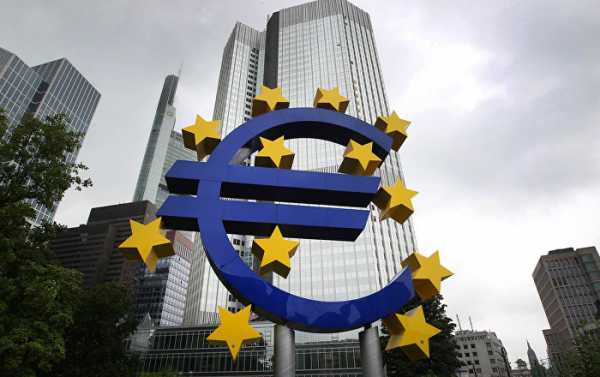
Mario Draghi is set is leave his job as European Central Bank (ECB) president this autumn, and his replacement, IMF Managing Director Christine Lagarde, is widely expected to either continue his policies of unconventional monetary stimulus, or even broader them.
ECB officials are preparing for a possible rate cut in September, and the central bank’s likely new leader, Christine Lagarde, is seen as being on board with Draghi’s agenda.
Draghi’s term at the ECB expires in three months, and Christine Lagarde is set to succeed him.
Draghi is now seeking to prevent the ECB from making unexpected policy moves, which could come with a power transition, but Lagarde generally agrees that weak manufacturing growth and international risks fully vindicate an upcoming cut in ECB base interest rates.
“Draghi is trying to make sure that everything is in place for Lagarde when she comes in and to protect her from spending too much political capital too early,” Gilles Moec of French insurer Axa, who formerly served at the Bank of France, said. “It’s a case of taking one for the team, in a way.”
The ECB’s Governing Council will meet on Thursday at the central bank’s headquarters in Frankfurt, Germany. Officials say the euro area’s inflation is higher than expected (at 1.3 percent as of June) but is still below the ECB’s 2-percent target.
Some economists say Lagarde could work towards lowering the central bank’s inflation target in order to ensure the stability of the ECB’s monetary policies. While officials are discussing a rate cut, the ECB already has zero-to-negative interest rates in place.
The ECB’s main refinance rate is set at zero, while its marginal lending facility rate stands at 0.25 percent. The central bank’s deposit facility is set at -0.40 percent.
Economists say it remains unclear if the ECB will undertake an across-the-board rate cut in September, or if it will lower borrowing costs for just one or two of its main lending schemes. If the ECB decides to cut the marginal lending rate down to zero, the central bank’s overall policy stance will remain generally unchanged.
However, a sweeping cut in rates could bring its policies deeper into negative territory. The negative interest rate regime (NIRP) has been described by some economists as bearing certain negative consequences for long-term economic growth. It may discourage savings and long-term fixed investment, while eroding the central bank’s ability to respond to future crises.
“The European economy is still evolving at low gear and two speeds, with robust service activity on the one side but no obvious recovering in manufacturing on the other,” S&P Global Ratings experts Marion Amiot and Sylvain Broyer wrote in a research paper last week.
Some economists, however, say slow manufacturing activity is not such a major concern. According to recent research by Goldman Sachs, investors pay too much attention to manufacturing sector reports, while industrial production contributes barely more than 15-20 percent to overall GDP growth in an average advanced economy.
Goldman experts suggest market participants should focus more on the consumer sector, which drives roughly 70 percent of the euro area’s economy.
“We warn against putting excessive weight on ups and downs in manufacturing data,” Goldman economists say. “Manufacturing is not the economy.”
And yet, Draghi, alerted by a recent slowdown in German industrial exports and that country’s manufacturing output, has been the main driving force behind the anticipated rate cut in September. Lagarde, as the IMF’s head, has repeatedly expressed her concerns with the slow manufacturing growth and tepid inflation across the advanced economies, and some of her advisors have even proposed hiking the inflation target to 4 percent from its current 2 percent.
Such a move would require deeper monetary stimulus, and, possibly a great accommodation on the fiscal side as well, such as tax cuts, or greater budget spending by euro area member states.
Economists believe Draghi and Lagarde agree on most of the challenges facing the ECB, and the power transition in Frankfurt is expected to go smoothly.
“There is a good deal of continuity here,” Nick Kounis of Amsterdam-based ABN Amro said. “Lagarde is very much a believer in what the ECB has done so far, and maybe if anything she would be even more proactive and activist.”
Meanwhile, negative interest rates have already impaired commercial banks’ reserves, rendering them less sustainable in the face of a possible economic crisis.
Some bankers argue if the ECB goes deeper into negative territory, some of the deposits must be exempted to prevent mass withdrawals, or ‘bank runs’ – while the ECB might also have to review its own rules on how much bonds it can purchase from the open market.
Sourse: sputniknews.com






